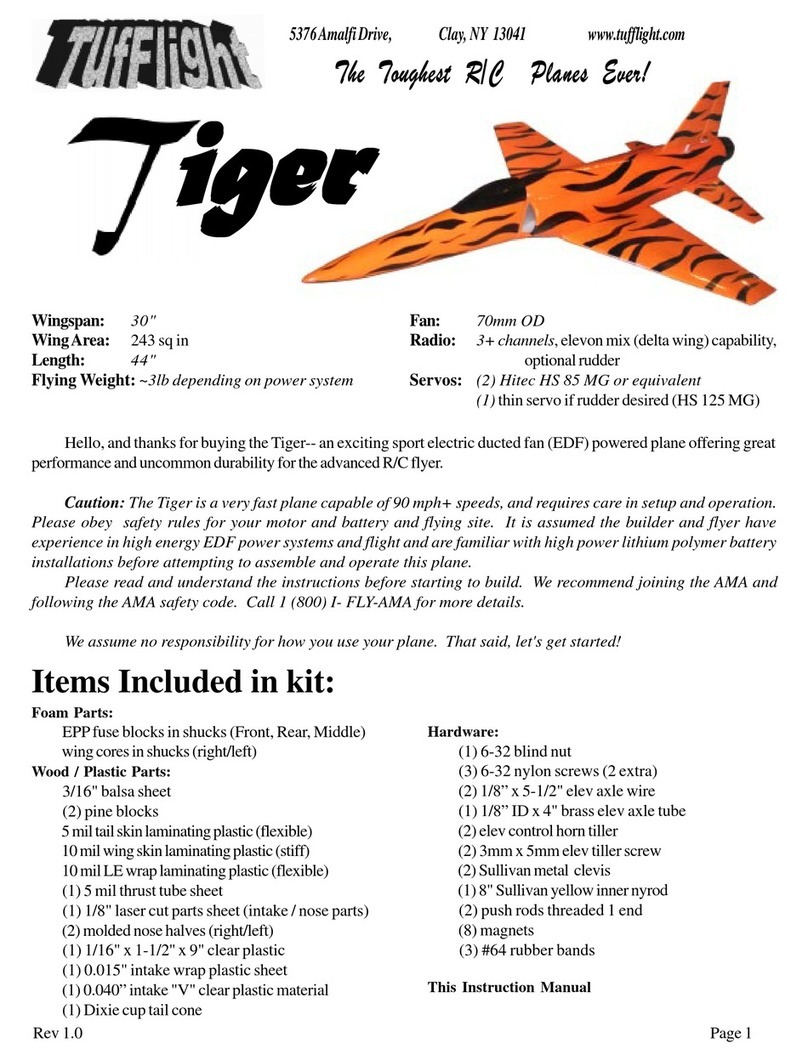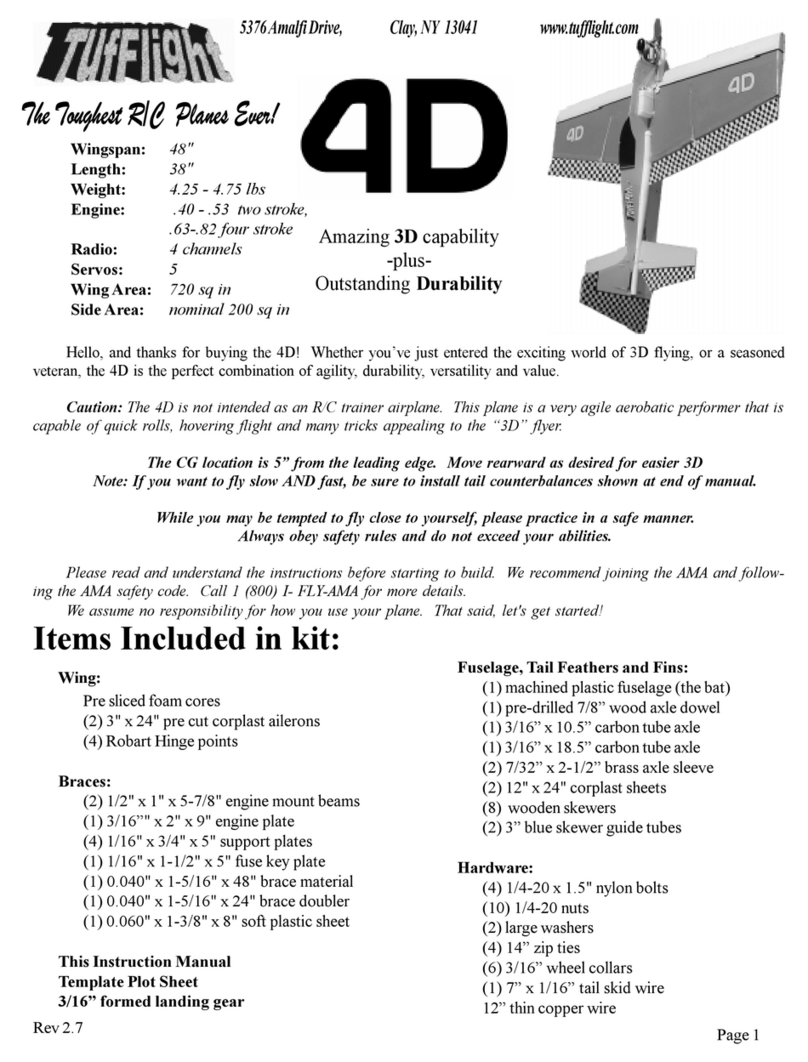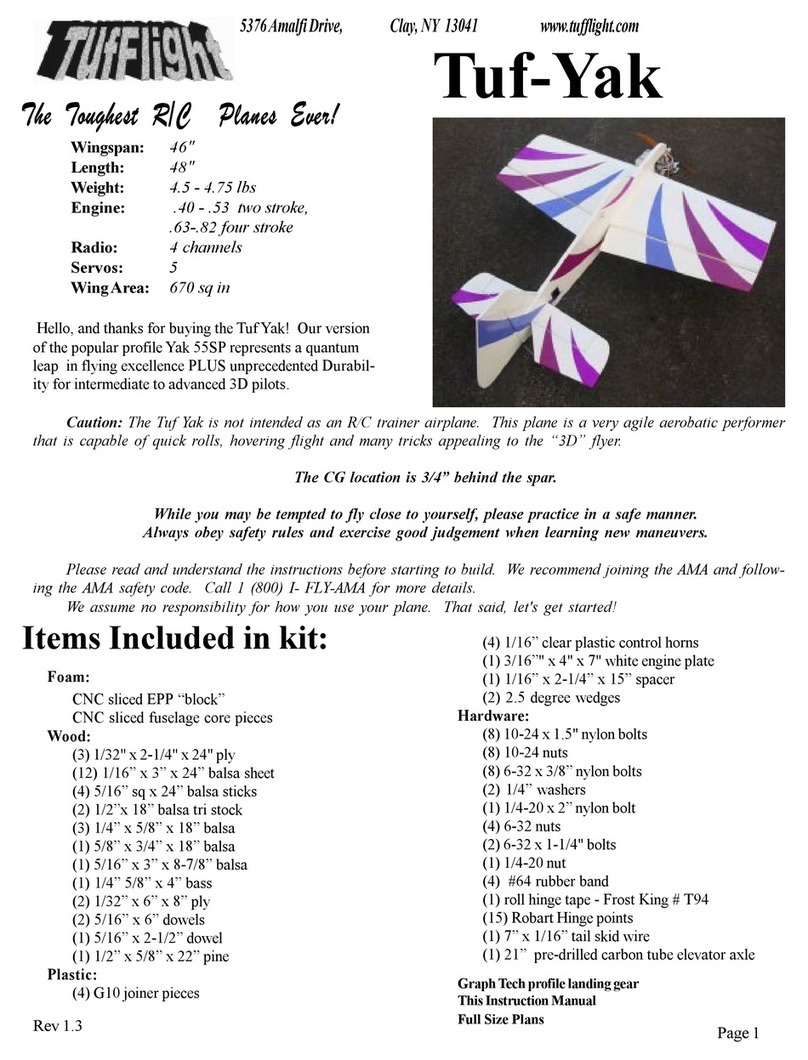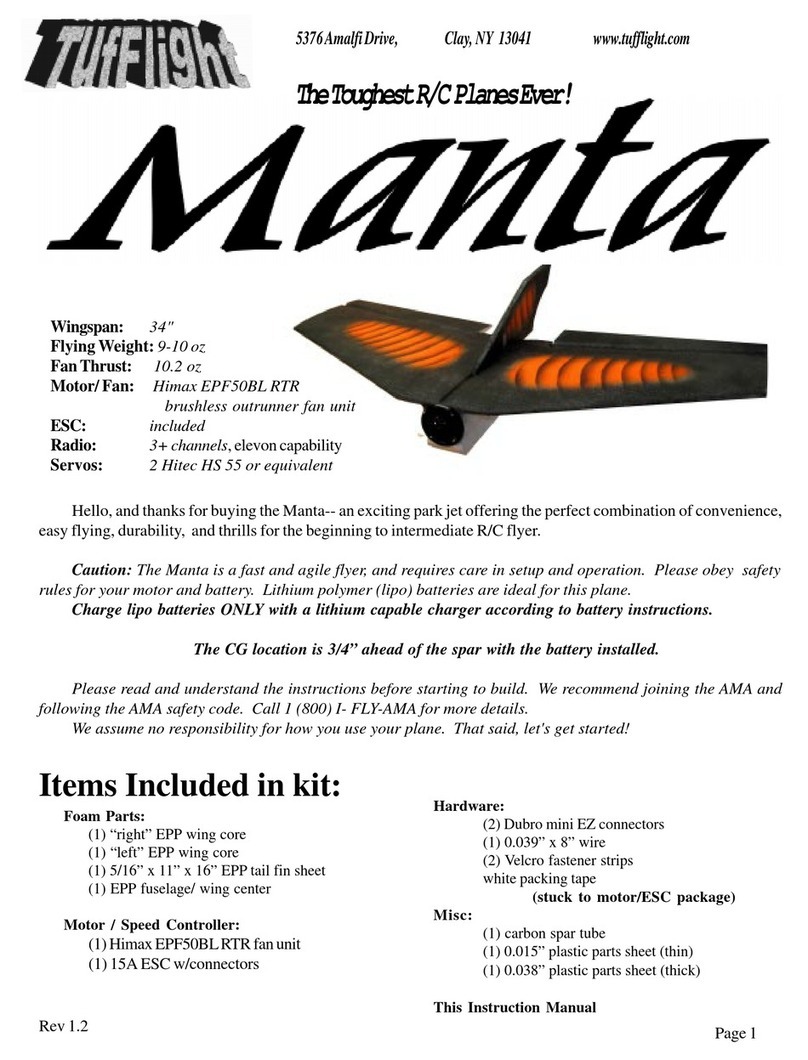
Page 2
Items needed to complete:
Equipment:
Himax HC3510-1100 brushless outrunner
or 250 W equivalent
4 channel radio receiver
30 - 35A electronic speed control (ESC)
1200 mAH - 2200 mAH 3S Lipo battery
4 servos: Hitec 65 or equivalent
Parts:
props :
APC 11 x 3.8 Slo Flyer -or-
APC 11 x 5.5 E
(2) 12” servo wire extensions
connectors for ESC and battery
solder (if needed for connectors)
shrink tube (if needed for solder joints)
Adhesives:
Gorilla Glue (clear, dries white), small bottle
--and/or--
Quick Grip adhesive
(available at Walmart and Michaels crafts)
thin CA(regular, NOT foam safe)
CA accelerator (kicker)
masking tape
3M77 Spray adhesive
Helpful Tools:
40 grit sandpaper on block
(found at auto finishing stores and Sears)
hobby knife / utility knife
new single edge razor blade
scrap of sheet rock as a “cutting board”
soldering iron
Phillips head screwdriver
straight screwdrivers
long nose pliers
wire cutters
Drill with 7/64”, 9/64”, 1/8”, 1/16” bits
Dremel Tool w/ drum sander and cutoff wheel
razor saw
felt tip pen
ruler/straight edge
metal file
scissors
clamps
plastic wrap
flat building table, at least 3 ft long
lightweight decorations: airbrush (recommended)
Flight Trim:
The recommended center of gravity (CG) point is
5-1/2” from the LE at the wing root with the battery in-
stalled. Adjust by positioning the battery by moving the
G10 plate and velcro strap on the fuselage for the new
battery position.
A good test for an aerobatic CG position is to fly the
plane upright and trim the elevator for level flight. Then
fly inverted and see if any down elevator control is needed
to maintain level flight. If the plane also flys level in-
verted with very little down elevator, the CG is good
for 3D. The farther back your CG moves, the more
“twitchy” your elevator will get. For 3D It helps to have
40 to 50 degrees deflection on all surfaces and a rear-
ward CG. 30 to 50% expo may also be helpful on all
surfaces (Especially elevator). Adjust to your taste.
You may wish to check and adjust lateral balance.
It should be very close to neutral if built as shown.
For hints on flying 3D maneuvers, consult our web
site: http://www.tufflight.com/3d_faq.html
Notes on Crashing and Repairs:
You should be able to fix foam damage with Quick
Grip for fast field repairs. Apply Quick Grip to one sur-
face, join parts temporarily, pull apart to let dry for about
30 seconds (you should see “spider webs”) and then put
them back together. In a few minutes the joint will be
flight ready. Large damaged areas will benefit from Go-
rilla glue as it foams to fill voids.
Have Fun!
Remember, weight is the enemy, so keep repairs
light! If there's one thing we've learned, it's amazing how
much cosmetic damage can be "ignored" when a friend
shows up to fly.
We want you to have fun exploring the limits, but
please do so safely.
We welcome any feedback you may have on this or
other TufFlight products.
Please feel free to contact us:
take care and enjoy!
Mark & Joe
































